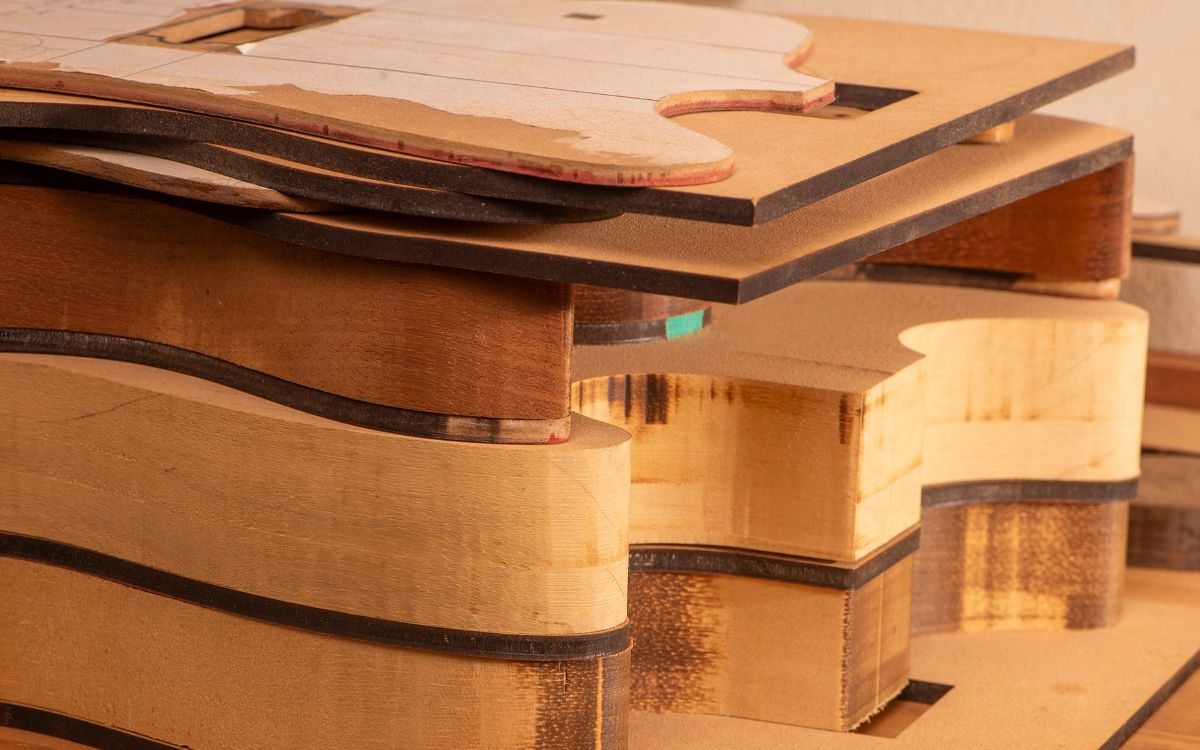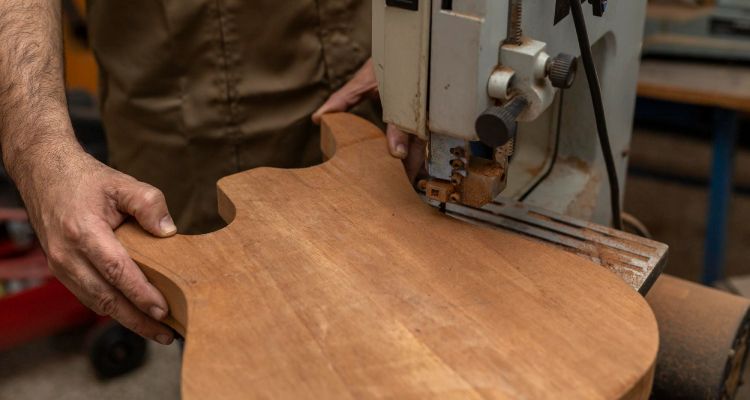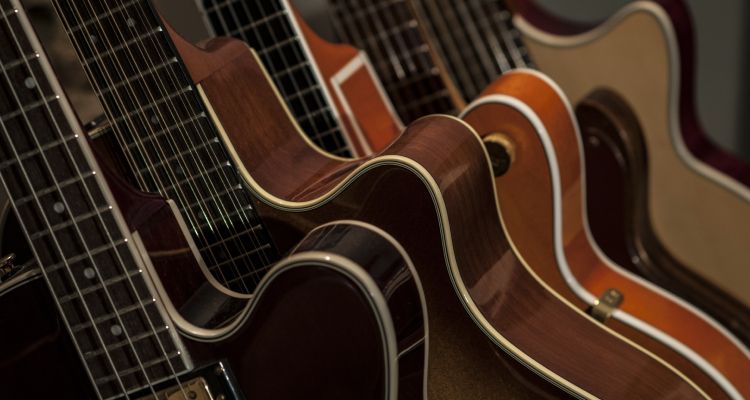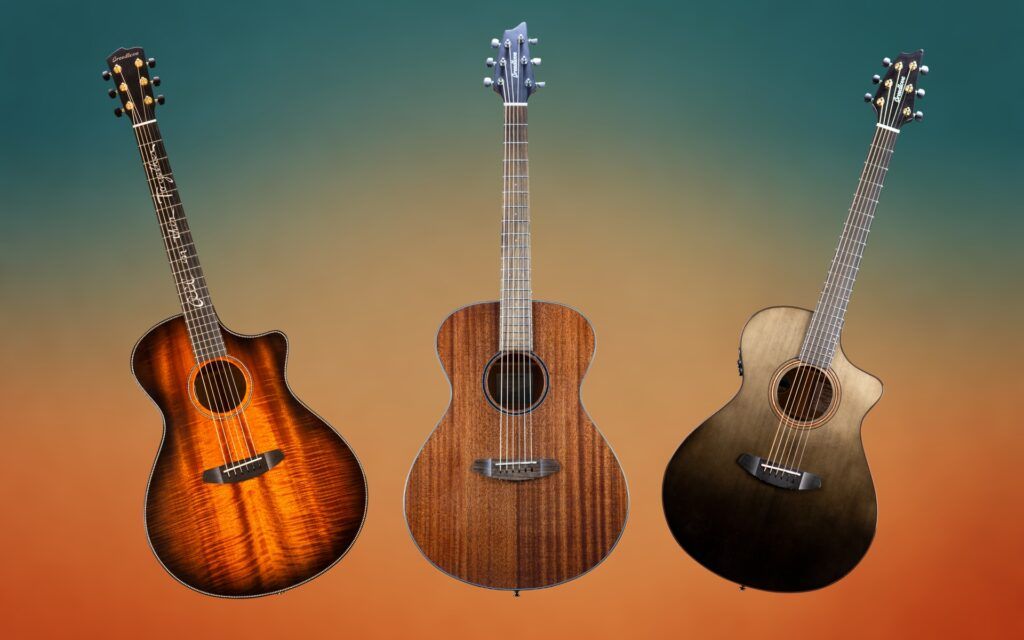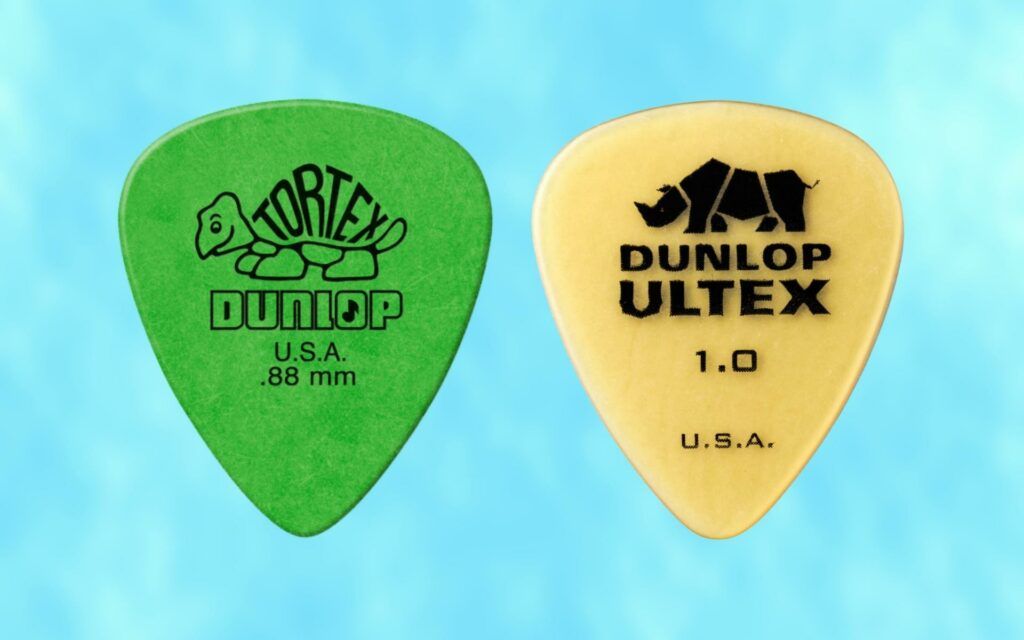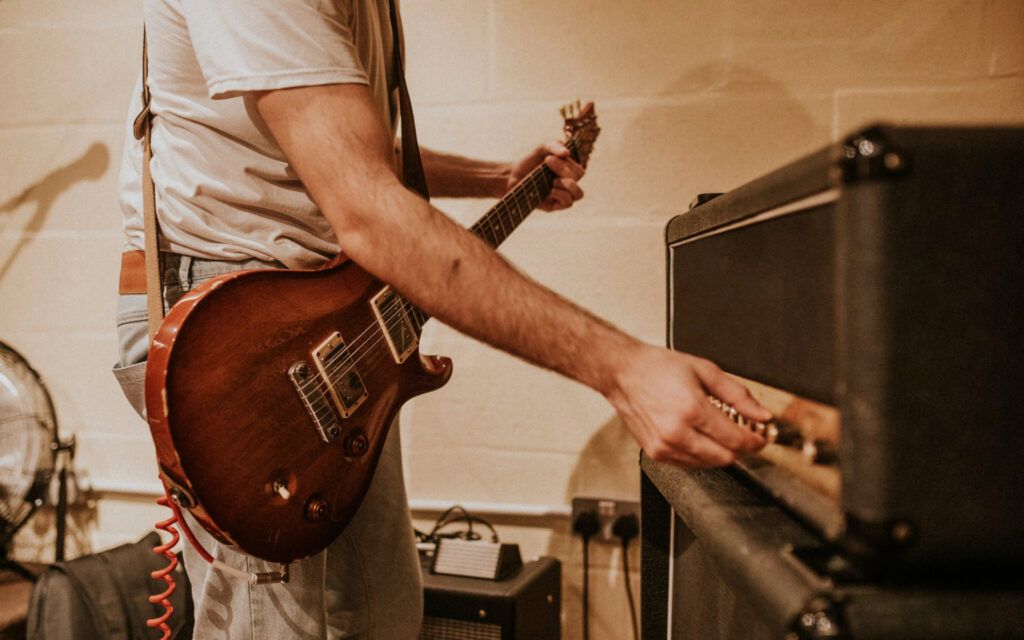When choosing an electric guitar, there are many different aspects to consider. Many guitarists focus on the aesthetics of the instrument or the pickups that are installed on it, but another vital factor is the tonewoods used to construct the guitar.
There are many wood types that manufacturers use for the body of an electric guitar, each of which offers tonal and dynamic benefits or drawbacks. Understanding how the body wood impacts the guitar’s performance is important when choosing a new axe.
In this guide, you’ll learn which tonewoods are best suited to your style of electric guitar playing, and why the body material has such an impact on the way the instrument feels and sounds.
What Are The Best Woods for Electric Guitar Bodies?
The best wood types for electric guitar bodies are arguably alder, maple, and mahogany. There are other great options, such as ash, and basswood, but alder, maple, and mahogany are highly reliable. They enhance the tone, dynamics, and durability of the guitar.
What Wood Is Best for A Guitar Body?
Electric guitars have been in production for many decades, and during that time manufacturers have experimented with a long list of tonewood types for the instrument’s body.
Some guitarists may prefer the sound and feel of certain body wood types, while others may favor different varieties. Essentially, it comes down to personal preference, but there are key pros and cons to consider with each different tonewood.
Alder
Alder is a popular choice for electric guitar bodies. This tonewood originates in Africa and Europe and physically isn’t too heavy which is why it is commonly used for solid body axes.
Tonally, alder is renowned for its balanced sound across the frequency range of an electric guitar. Its most prominent frequency band is the upper mids, which is a result of the high density of the wood’s grain.
Moreover, alder is a great choice for rock or blues guitar, as it offers good note definition and clarity. These qualities mean that they can be used for rhythm and lead playing, or a combination of the two. This explains why the vast majority of high-end Fender guitars have used Alder for their body since the 1950s.
Another reason for Alder’s popularity is its affordability. Compared to other high-end body tonewoods, Alder is considerably cheaper, and it doesn’t need to be combined with another wood type.
One of the only drawbacks of Alder is that its natural grain pattern isn’t particularly interesting to look at, and it is therefore finished to make it look more appealing.
Main qualities: Balanced tone, good clarity, and note definition.
Ash
Although it is not used as extensively as alder, ash is another popular choice for electric guitar woods.
Ash comes in two varieties – swamp ash, which originates in the deep south of the United States, and hard ash, which predominantly comes from the north of the USA. While there are some similarities between the two types, they also produce vastly different results when used for an electric guitar’s body.
The earliest electric guitars produced by iconic manufacturers Fender had bodies made from swamp ash until founder Leo Fender decided to switch to Alder. This was due to alder being more readily available and less expensive than swamp ash.
Swamp ash has a beautiful, creamy white color, and a noticeable pattern of the grain. In terms of sound, this tonewood boosts the resonance of an electric guitar, with a bright high-end and a good overall balance.
Hard ash, on the other hand, is heavier than swamp ash, with an almost identical appearance. It is favored for metal or heavy rock guitars, due to its enhancement of sustain and a naturally bright tone.
Main qualities: Balanced across the frequency range, with a bright tone and an aesthetically-pleasing grain pattern.
Basswood
Basswood is another tonewood that is grown in North America. It is characterized by its softness and is easily sourceable, making it an affordable option for manufacturers when choosing the best wood for guitar body parts.
In addition to being relatively soft, a basswood is also a lightweight option. It is only used for the body of an electric guitar, as its physical attributes are unsuitable for guitar necks or fingerboards.
Basswood gets a mixed reception amongst the guitar-playing community. Some see it as a low-quality option that is only suitable for budget guitar bodies, while others enjoy its consistent tonal balance and overall warm tone.
Main qualities: Affordable, readily available, and produces a warm, consistent tone.
Koa
Koa is harvested in the state of Hawaii and stands out due to the bright tone it produces when it is used as an electric guitar body wood.
Although it’s not as popular amongst manufacturers as many of the other tonewoods featured on this list, koa has become more commonly used in recent years. It has a distinguished appearance, with an interesting grain pattern.
Main qualities: Prominent high-end, noticeable grain pattern and appearance.
Korina
Guitar manufacturing icons Gibson have turned to the tonewood Korina for a selection of their electric guitar bodies. This wood has gradually become more popular over time but continues to divide opinions amongst guitarists.
Sonically, Korina produces a particularly full-sounding low-end. Consequently, it’s great for riff-heavy styles of playing and works well with drop tuning too.
The midrange that Korina produces is warm and clear, and many argue that tonally it is better than many of the most popular tonewoods used for electric guitar bodies. Unfortunately, some other factors limit the extensiveness of its use.
Korina is challenging for guitar designers to use because the moisture leaves the wood very quickly when it is drained. This makes it much more likely for Korina to break and split. It is also prone to picking up permanent stains which negatively impact its appearance.
Additionally, Korina is difficult to source compared to mahogany and other common body tonewoods, which further explains why it hasn’t reached the maximum level of popularity.
Main qualities: Powerful low-end, pronounced midrange, and smooth feel.
Mahogany
If you’re wondering what kind of wood is best for an electric guitar body, mahogany is definitely in contention.
It’s a common misconception that mahogany is a single tonewood, when in fact the name is used as an umbrella term that includes a variety of hardwoods sourced from various locations worldwide.
Genuine mahogany is native to Mexico and the Amazon. It is an extremely durable tonewood, with good resistance to wear and tear. Therefore, guitar manufacturers have used it for both electric and acoustic bodies for decades.
One of the only drawbacks of mahogany is its weight, which is noticeably heavier than other body woods like alder or ash. Sonically, it produces a strong, clear low-end, with powerful midrange frequencies and an effortlessly smooth high-end.
Gibson’s extensive use of mahogany throughout their history illustrates this body wood type’s quality. It adds sustain to an electric guitar’s output and sounds great with high-gain amplifiers or effects.
Physically, mahogany is highly unlikely to warp, and it tends to get better with age!
Main qualities: Durable, strong-sounding with tight bass and high compatibility with gain.
Maple
You might be wondering, what wood has the best resonance? Maple is renowned for this quality.
Maple comes in a hard and soft variety. This popular tonewood is used for electric guitar bodies, necks, and fingerboards, due to its versatility. Both types of maple are predominantly grown in Canada and the USA.
Soft maple is the most commonly used of the two types for electric guitar bodies, but hard maple is sometimes used for solidbody guitar bodies. Both share visual similarities, but their sonic and dynamic qualities vary.
When soft maple is used for electric guitar bodies, it promotes a sharp attack, bright tone, and substantial sustain. It sounds full across the frequency range and is suitable for chords or lead guitar playing.
Another reason that maple is popular amongst guitarists is its unique grain pattern, which looks like peaks and troughs.
Main qualities: Strong attack, bright, clear tone, with a beautiful curved aesthetical pattern.
Poplar
Poplar is used as the tonewood for many affordable electric guitar bodies. It bears many similarities to alder in terms of the way it sounds, with a good balance of low-end. midrange and treble frequencies.
The main difference between poplar and alder bodies is that poplar tends to have a more pronounced high-midrange, which makes it ideal for jangly rhythm guitar playing.
Unlike maple and mahogany, poplar doesn’t have a particularly eye-catching appearance. However, some poplar bodies have a rare, beautiful grain pattern.
Main qualities: Balanced across the lows, mids and treble frequencies, with a particularly prominent upper midrange.
Walnut
Walnut is perhaps more commonly used for electric guitar fingerboards than any other component, however, it is also highly suited to being used for the body.
Walnut has similar physical properties to maple. It is solid and hard with a slightly smoother feel and a more refined tone.
Renowned for its elegant, light brown color, walnut is great for increasing the presence and sharpness of an electric guitar’s sound. It sounds a little harsher than most other hard-tonewoods, making it a good choice for rock guitarists.
Main qualities: Elegant appearance, smooth feel, and powerful presence.
Why Do Electric Guitar Body Woods Produce Different Sounds?
Many guitarists underestimate the impact the body tonewoods have on their instrument’s sound. The aesthetical effects are clear to see, but unless you play a variety of guitars with different body woods. it’s hard to understand the impact.
In reality, the body wood affects everything from the prominent frequencies that the guitar produces, to its dynamics. There are several reasons that the body wood type affects the way a guitar sounds.
Firstly, the density and hardness of the wood play a role in determining the frequencies which stand out. Softer body woods tend to have a less intense, smoother tone, while harder varieties sound sharper and heavier.
Secondly, the body wood interacts with the other materials used to construct the guitar. Oftentimes, a manufacturer will choose their fingerboard and neck materials to complement their choice of the body wood.
An exam[ple of this is mahogany and rosewood. Many guitarists consider this combination of a mahogany body with a rosewood fingerboard to be a combination of the best wood for electric guitars.
Summary
This list of the best guitar woods illustrates the large number of options that are available to manufacturers.
Each wood type offers various benefits, so it’s important to make a careful decision based on your style of playing and your budget.

